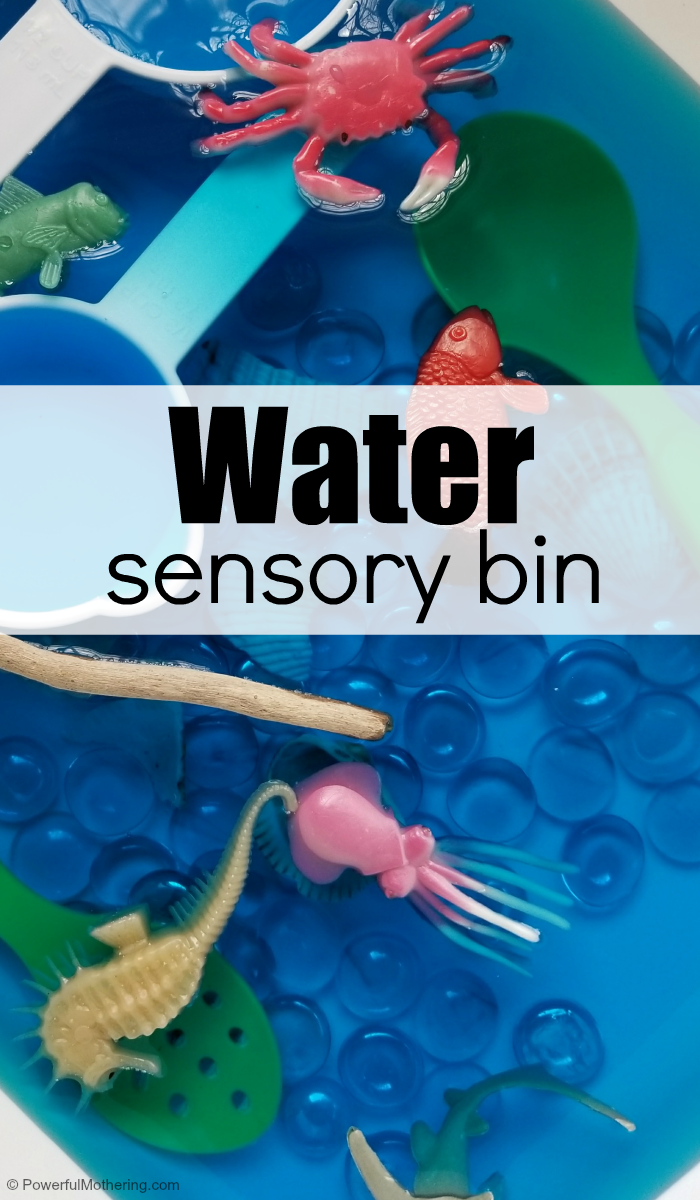This post may contain affiliate links. If you use these links to buy something we earn a commission at no extra cost to you. Powerful Mothering is supported by its audience, thankyou!
Kids love to get their hands wet, don’t they? A water sensory bin can give them a safe space to play, explore, and enjoy a wholesome sensory experience.
Creating your own water sensory bin doesn’t have to be complex, in fact you can get most of the supplies you need right at your local dollar store. Look below at how to create your own water sensory bin for kids, so you can start splashing and exploring as the weather heats up.

Make a Water Sensory Bin
Here is what you will need:
plastic tablecloth
large plastic water proof bin
water
food coloring
floating bath toys
sinking toys
cups, scoops, small dishes
eye droppers
spoons
plastic ocean animals

As you can see, most of these items can be found right in your own home, or you can find these supplies at your Dollar Store. Look for water proof, child safe items that won’t rust when exposed to water. Plastic works best.
Directions:
Place the plastic tablecloth on your work surface. This will protect your surface and make clean up easier.
Fill the plastic bin about ⅔ of the way full of room temperature water. You can heat it slightly if your child is sensitive to cold.
Add in a few drops of food coloring. Blue works great because it really makes it look like ocean water.

Mix the coloring well. Set out the assortment of water toys. You not only want to include toys, but also units of measurement like measuring spoons and cups. This way, it is an educational activity on top of a sensory activity!
Show kids how they can scoop, pour, and measure the liquid.
Use the various toys to predict and then try out which pieces will sink and which ones will float.
Add in the ocean animals so children can see the animals in their habitat. Talk about how animals rely on water for survival.

Give children plenty of time to splash, play, and explore. You can add another shade of coloring if you wish for the water to change hues. Or you can even add natural elements like flowers, leaves, and sticks.

When you are done, simply pour out the water and dry your bin for next time. Toys can be stored in a plastic bag. Dry before storing to avoid mold. If you wish to resume your activity later, a storage bin with a lid may be a good idea as it can protect the water and contents until you can resume.
Give this water sensory bin for kids a try and see how much fun it can be to get wet while learning!









Leave a Reply